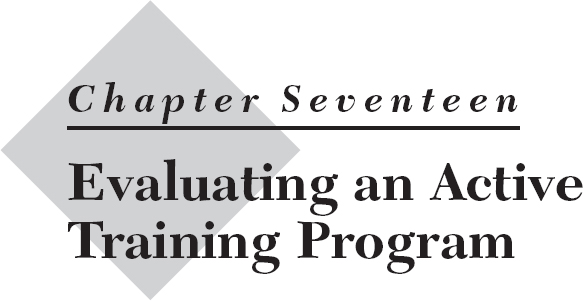
Evaluating a training program is often seen as a final step, but, in actuality, it starts the process of design and delivery. That's because it provides the data that allows for the continuous improvement of the training program. When you learn how participants have been impacted by the training, you have the opportunity to assess how well the existing program works and what modifications may be necessary to make it more effective. In reality, evaluation begins at the design phase. The objectives identified should lead to the results desired and that is what is evaluated.
Evaluation is important. It takes time, but it is essential. Professional trainers build in time to measure results to ensure everyone knows what in the training program should be changed, what kinds of assistance participants may need after they return to their jobs, and what obstacles still exist that prevent transfer of training.
Most trainers subscribe to the model advanced by Dr. Donald Kirkpatrick (2005) that there are four levels of evaluation of a training program:
Level 1, Reaction: Learner attitudes toward the training opportunity, such as a satisfaction with involvement or what was learned
Level 2, Learning: Knowledge and skills learned, such as being able to state the best practices or for having new skills for tasks on the job
Level 3, Behavior: Changes in execution and implementation of skills learned ...
Get Active Training: A Handbook of Techniques, Designs, Case Examples, and Tips, 4th Edition now with the O’Reilly learning platform.
O’Reilly members experience books, live events, courses curated by job role, and more from O’Reilly and nearly 200 top publishers.

